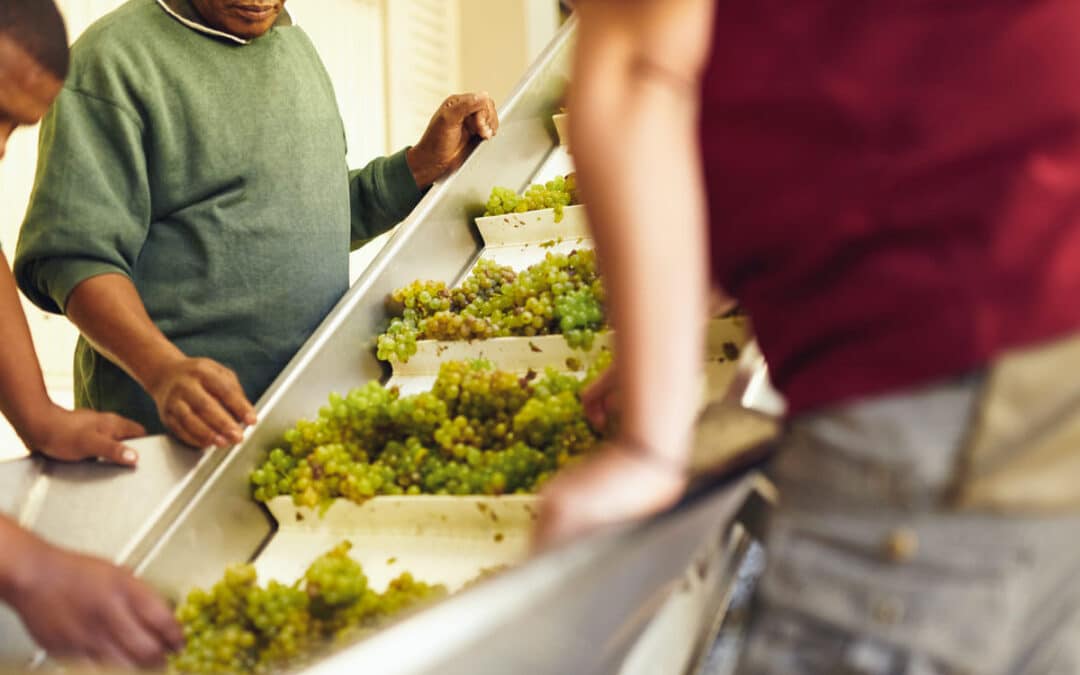Grapes come from the Earth. They are not the product of a pristine laboratory. One does not wear white gloves when handling the fruit at harvest. Our grapes are harvested in the dark (as cool temperatures make for fruit that arrives to the winery in better condition). As can be expected the picking bins sometimes have some Material Other than Grapes, the infamous MOG.
How does such crystal clear wine result from something from a farm?
Enter the Moggers.
But, what is a mogger? Do I need to lock my car door when they approach?
No, they might be a bit eccentric, but, for the most part, moggers are harmless. A mogger is a person tasked with the job of removing MOG from the incoming fruit at the winery.
On their way to the destemmer, the grapes pass down a conveyer belt where the moggers keep a vigilant eye for offending items.
MOG is generally leaves, twigs, twine, and weeds. However, lizards sometimes find their way into the bins. When one has been in the industry long enough, one hears vague legends of rattlesnakes coming down the line. At least once a live skunk came down the line, sending the mogging crew scattering (this, fortunately, was not at Hill Family Estate, but ours is a small valley, and stories get around).
What about the MOG that makes it through the line? In even the cleanest batch of fruit, we will get a few leaf and stem fragments in the fermenting must. Generally the amount of MOG is insignificant. If large amounts of stem and leaf bits are in the ferment, they could contribute tannins and vegetal aromas, but it never comes to that.
As for the clarity of the wine, any large solids will remain with the pomace at pressing, and small particles are removed via fining and filtration.
If you are wandering around the Napa Valley at harvest, and you encounter a rogue mogger, the best thing to do is to offer a good soak with the garden hose, as moggers are generally covered in grape juice and can be quite sticky. After that, a delicious glass of Hill Family Estate wine is always in order!
Cheers!

